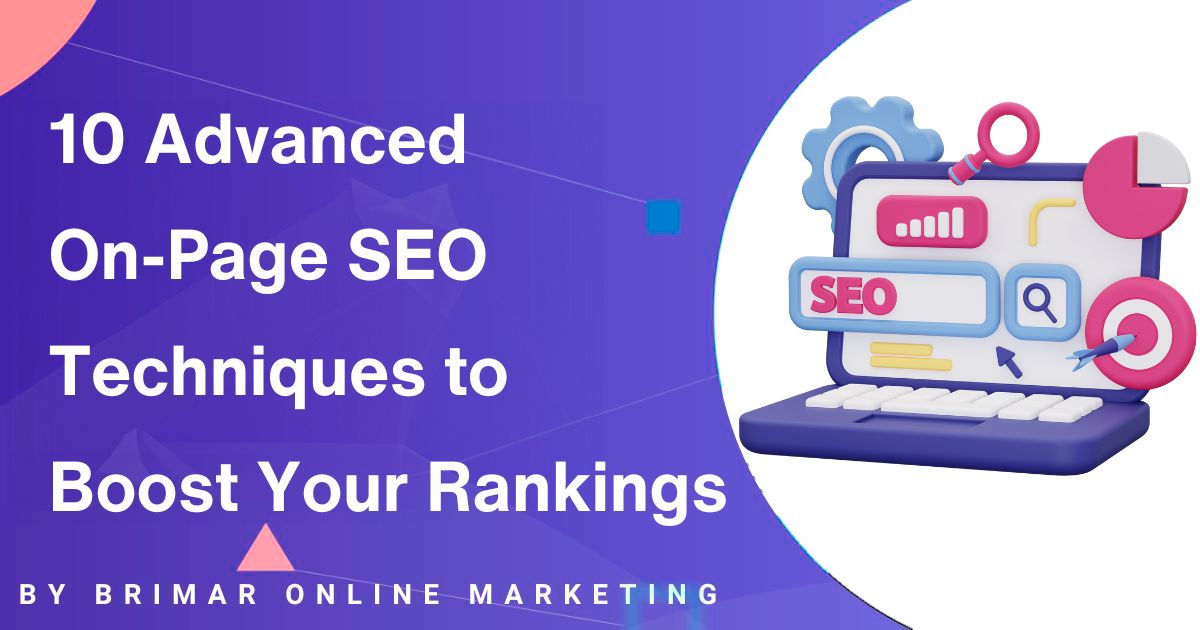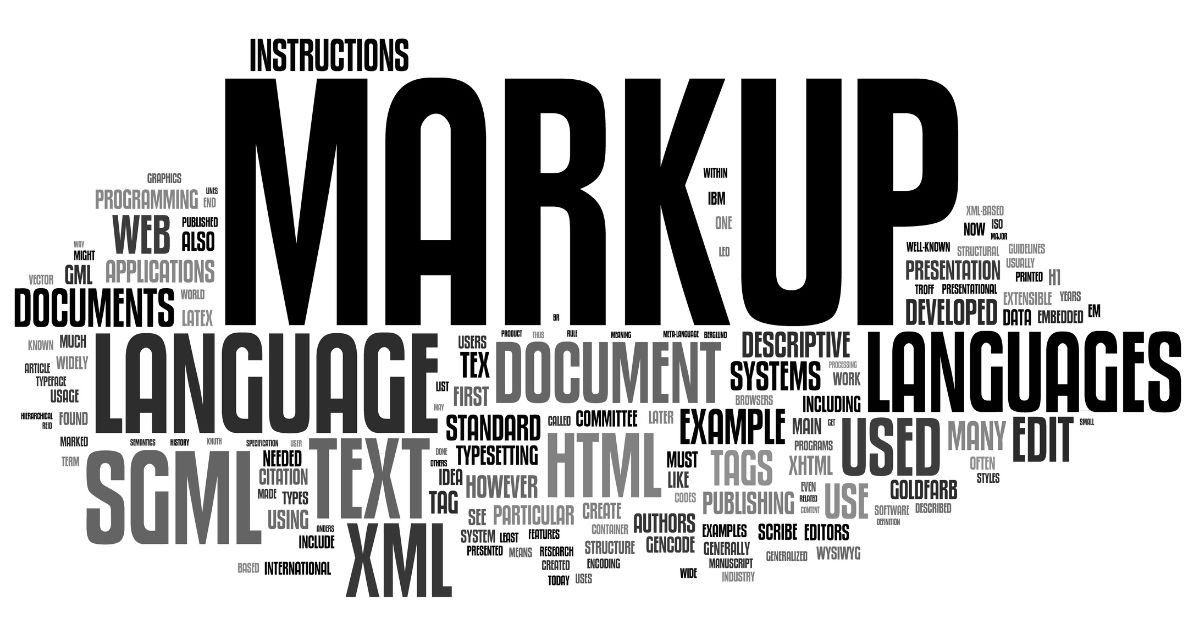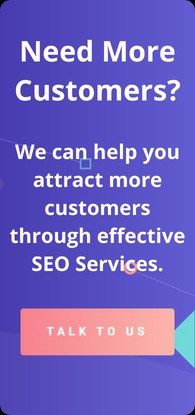
Showing up at the top of search results doesn’t happen by luck.
It takes a well-planned approach, and that’s where on-page SEO comes in.
How a website is structured, its content, and how easily users and search engines navigate through it all play a huge role in rankings.
Every detail affects visibility and engagement, from how a page loads to how keywords are placed.
A solid on-page SEO strategy helps search engines understand a website’s content, increasing its chances of attracting the right audience.
It helps web pages rank higher, improves user experience, and keeps visitors engaged longer.
These techniques enhance metrics and improve the browsing experience, making it easier for potential customers to locate valuable information and take action.
Advanced strategies give businesses an edge in competitive markets.
With the right approach, a site can stand out, earn more organic traffic, and convert visitors into loyal customers.
Success isn’t just about having a website; it’s about ensuring it benefits both users and search engines.
1. Understanding On-Page SEO and Its Importance
Every search starts with a question.
The websites that provide the best answers most efficiently get rewarded with better rankings.
That’s the core of on-page SEO optimizing web pages so search engines recognize their value and connect them with users searching for relevant topics.
Unlike off-page SEO, which focuses on backlinks and external signals, on-page optimization happens directly on a website.
This includes everything from the structure of a page to the content itself.
Titles, headings, internal links, and labeling images affect how search engines interpret and rank a site.
When pages are well-optimized, they become more visible in search results, attracting more organic traffic.
A strong strategy helps potential customers find precisely their needs while ensuring search engines can easily understand the site’s content.
That balance between technical improvements and user-friendly content separates average websites from top-ranking ones.
Start Attracting Customers Through SEO Today!
We can help you attract new customers through Tailored Search Engine Optimization Strategies for Your Business.
2. Optimizing Page Titles, Meta Descriptions, and Title Tags
Your page title and meta description are the first things people see in search results.
A well-crafted title grabs attention, while a strong meta description gives potential visitors a reason to click.
Get these right, and you’ll boost your click-through rate and send positive signals to search engines.
Write Titles That Spark Interest
A good page title is clear, compelling, and includes your target keywords naturally.
Think about what makes someone stop scrolling.
A vague or generic title won’t cut it.
Instead of “Best Marketing Tips,” try “10 Proven Marketing Strategies to Grow Your Business.”
The difference?
One is forgettable, while the other promises results.
Best Practices for Title Tags:
- Keep it under 60 characters to avoid getting cut off in Google search results.
- Place your target keywords near the beginning for better search engine optimization.
- Make it specific. Titles that hint at a solution or benefit get more clicks.
Meta Descriptions That Drive Clicks
Although a meta description doesn’t directly impact search rankings, it can greatly influence people’s decisions to visit your site.
If you don’t write one, Google will pull a random snippet from your page, which may not be relevant.
- Aim for 150-160 characters to ensure the full description shows in search engine results.
- Include relevant keywords This helps match user intent.
- Employ language that encourages action: “Explore,” “Understand,” “Uncover how,” “Receive expert guidance.” tips.”
A strong title tag and meta description work together to improve visibility and engagement.
They’re small details, but they significantly impact how your site performs in Google rankings.
Avoid Keyword Stuffing. Write for Humans First
Repeating the exact target keywords over and over doesn’t help.
In fact, search engines penalize pages that try too hard. Instead of stuffing every keyword variation into your title and meta description, write naturally while keeping user intent in mind.
3. Enhancing User Experience for Better Rankings
Google monitors user engagement on your site.
If visitors leave quickly, it’s a red flag.
Slow load times, clunky navigation, or poor mobile compatibility can also deter potential customers and hurt your Google rankings.
Page Speed Matters More Than You Think
A slow website frustrates visitors.
If your page loads slowly, users will leave.
Bounce rates increase, and search rankings suffer.
Quick Fixes for Faster Load Times:
- Shrink images to lower file size while maintaining quality.
- Reduce excessive scripts and plugins that hinder performance.
- Use a content delivery network (CDN) to speed up page loading.
Even a one-second delay can lower conversion rates, so optimizing speed isn’t optional; it’s essential.
Optimize for Mobile Users
An increasing number of people are browsing on their phones before.
You’re missing out on traffic if your site isn’t optimized for mobile devices.
A clunky mobile experience doesn’t just annoy visitors; it affects your search engine rankings.
Mobile Optimization Checklist:
- Implement responsive design to ensure your site adjusts to any screen size.
- Ensure buttons and links are easy to tap without zooming in.
- Improve readability with legible fonts and proper spacing.
Google’s mobile-first indexing means your mobile site is the priority.
Your Google search results will take a hit if it’s not optimized.
Core Web Vitals and Their Impact on Rankings
Google uses Core Web Vitals to measure how user-friendly a site is.
These focus on:
- Loading speed: How fast does your page appear?
- Interactivity: Does the page respond quickly when users click?
- Visual stability: Do elements shift unexpectedly while loading?
A well-optimized site doesn’t just rank better; it keeps visitors engaged, lowers bounce rates, and improves overall SEO performance.
The easier and faster your site is to use, the better your results in search engines.
4. Content Creation and Keyword Optimization

Great content isn’t just about filling up a page; it’s about delivering valuable information that keeps people engaged and drives search engine rankings.
Visitors will leave if your content doesn’t offer something useful, which hurts your bounce rates.
Writing for Your Target Audience, Not Just Search Engines
Search engines reward content that answers questions, solves problems, or provides unique insights.
But before focusing on rankings, think about your target audience.
What are they searching for?
What information do they need?
Creating content that speaks directly to them builds trust and keeps them on your site longer.
The Power of Using Relevant and Long-Tail Keywords
Stuffing your content with target keywords doesn’t work anymore.
Keyword stuffing can do more harm than good. Instead, focus on using relevant keywords naturally throughout your content.
Long-tail keywords are compelling because they match specific search intent and bring in visitors who are more likely to convert.
For example, instead of targeting “SEO tips,” try “advanced on-page SEO techniques for better rankings.”
That longer phrase is more specific, less competitive, and more likely to attract the right audience.
Use Keyword Research Tools to Find Winning Topics
Guesswork won’t get you far.
The best way to find what people are searching for is by using keyword research tools like Google Keyword Planner.
These tools help you discover trending topics, understand search volume, and find opportunities that competitors might be missing.
Other tools like Google Search Console and Google Analytics can show you which keywords are already bringing in traffic, so you can double down on what’s working.
Make Your Content Stand Out
With millions of blog posts published daily, getting noticed isn’t easy.
The key?
Unique content that offers a fresh take on a particular topic.
Whether it’s case studies, step-by-step guides, or expert insights, adding your perspective makes your content more valuable and shareable.
Search engines love fresh, in-depth content that keeps visitors engaged.
And when people find valuable content, they stay longer, interact more, and are more likely to return.
5. Internal Linking and Site Structure for Better SEO Performance
A great website isn’t just about great content but also about how it is connected. That’s where internal linking and site structure come in.
When done right, these elements help search engines understand your site while making navigating easier for visitors.
Why Internal Linking is a Game-Changer for SEO
An internal link is simply a link from one web page on your site to another.
But it’s more than just a convenience; it’s a powerful SEO strategy.
Here’s why:
- It assists search engines in crawling and indexing your website more effectively efficiently.
- It keeps visitors engaged by guiding them to related topics they’re interested in.
- It spreads SEO value (or “link equity”) across your site, boosting the ranking potential of essential pages.
For example, if you have a blog post about “On-Page SEO Techniques” and another about “How to Use Schema Markup,” linking them together strengthens both pages.
It helps visitors find additional information they might need.
Best Practices for Internal Linking
- Use descriptive anchor text instead of generic phrases like “click here.” For example, link to “best on-page SEO techniques” rather than “read more.”
- Link to relevant pages that add value, not just for adding links.
- Make sure vital pages get more internal links. Your homepage, landing pages, and cornerstone content should be well-connected.
- Keep it natural. Overloading a page with too many links can confuse readers and make it look spammy.
Site Structure Matters More Than You Think
Search engines love well-organized sites.
A clear site structure helps Google understand how your content is related, which can improve your search rankings.
What is the easiest way to structure your site?
Think of it like a pyramid:
- Homepage at the top
- Main categories or service pages beneath it
- Individual blog posts and subpages linked below
This hierarchy ensures visitors (and search engines) can easily navigate your content, leading to better user experience and improved rankings in Google search results.
A strong content strategy, combined with smart internal linking and a well-organized site, can elevate your SEO to the next level.
The goal isn’t just to rank higher but to create a seamless experience that keeps visitors returning for more. That’s how you build organic traffic that converts.
6. External Links, Brand Mentions, and Social Media Integration
SEO isn’t just about what’s happening on your website; what others say about your brand matters, too.
When search engines crawl the web, they look for signals that show your site is a trusted source. That’s where external links, brand mentions, and social media integration come into play.
Why External Links Matter for SEO
Linking out to reputable sources helps establish your site as a credible resource.
Search engines see this as a sign that your content is well-researched and valuable.
But it’s not just about adding random links; quality matters more than quantity.
The best approach is to link to authoritative sources that enhance your content and provide valuable insights for your audience.
At the same time, earning external links from other trusted websites boosts your search engine rankings.
These are referred to as backlinks, serving as “votes of confidence” for your content.
The more high-quality sites link to your pages, the better your chances of ranking.
How Brand Mentions on Social Media Influence Search Results
Search engines pay attention to how often a brand is mentioned online.
While social media links don’t directly impact rankings, frequent mentions across platforms like Facebook, LinkedIn, and X create brand awareness and trust.
If your content is widely shared and discussed, search engines take that as a signal that your website offers valuable information.
Consistent activity on social media also helps drive organic traffic.
When people engage with your content, they’re more likely to visit your website, reducing bounce rates and increasing user engagement, which indirectly improves your Google rankings.
Effective Link Building Strategies That Align with SEO Best Practices
Not all links are created equal.
To get the best SEO results, focus on ethical link-building strategies that enhance your credibility:
- Guest posting: Write articles for reputable industry blogs and include links back to your site.
- HARO (Help a Reporter Out): Respond to journalist queries to get featured in news articles with backlinks.
- Creating shareable content: High-quality blog posts, infographics, and case studies attract natural links.
- Networking with influencers: Collaborate with industry experts to get your content shared on high-authority sites.
- Fixing broken links: Find and replace broken external links with your content on relevant sites.
These methods help you build a strong online presence while aligning with on-site SEO best practices.
7. Leveraging Schema Markup for Rich Snippets and Featured Snippets

Schema markup is one of the easiest ways to make your website stand out in Google search results.
This structured data helps search engines understand your content better and display enhanced search listings known as rich snippets.
What is schema markup and why is it important Matter?
Schema markup is a code you add to your website to give search engines additional information about your content.
It helps define product details, event dates, author names, FAQs, and more.
When search engines recognize this structured data, they can display rich snippets of enhanced search results that stand out visually.
This can include:
- Star ratings on product and service reviews
- Recipe information with cooking times and calorie counts
- Event details like dates and locations
- FAQ sections directly in search results
- Product prices and stock availability
These details make your listings more appealing, which leads to higher click-through rates (CTR) and more visitors.
How Star Ratings and Additional Information Affect Conversions
People naturally trust listings that show star ratings and detailed information.
If users see two similar results in a search, they’re likelier to click on the one with positive reviews, transparent pricing, and structured data.
By implementing schema markup, businesses can boost conversion rates by making content more engaging and trustworthy.
For example, an e-commerce site that displays star ratings and customer feedback in search results is likelier to receive clicks than one that does not provide any extra details.
Using SEO Tools to Optimize Structured Data
Setting up schema markup doesn’t have to be complicated.
Tools like Google Search Console and SEO plugins (for WordPress and other platforms) make generating and testing structured data easier.
To get started:
- Use Google’s Structured Data Markup Helper to create schema code.
- Test it with Google’s Rich Results Test to ensure it’s working correctly.
- Monitor your results in Google Search Console to track how schema improves your SEO performance.
By leveraging structured data, you can improve search visibility, create a better experience for potential customers, increase organic traffic, and gain a competitive edge.
8. Multimedia Optimization. Video Content, Alt Text, and Image SEO
Adding visuals to your website isn’t just about making things look good; it’s a powerful way to improve rankings and keep visitors engaged.
Search engines pay attention to how users interact with content; multimedia elements can make a big difference.
Why Video Content is a Game-Changer for SEO
People love videos.
It keeps them on your page longer, signals search engines that your content is valuable and increases your chances of appearing in search results.
Embedding relevant videos in blog posts or key pages can reduce bounce rates and boost user engagement.
If done right, videos can also help you rank for featured snippets, driving even more organic traffic.
To maximize the impact:
- Host videos on YouTube or Vimeo and embed them on your site to improve load times.
- Incorporate important keywords into the video title and description tags.
- Add transcriptions to make content searchable and improve accessibility.
- Encourage shares on social media to increase visibility and reach.
The Role of Alt Text in Image Optimization
Search engines can’t “see” images like humans, but alt text helps them understand what an image represents.
Well-written alt text improves search engine rankings, enhances accessibility for visually impaired users, and even boosts your chances of appearing in Google Image Search.
Here are some crucial points to remember:
- Be descriptive. Explain what the image is about without keyword stuffing.
- Include relevant keywords
- Keep it short but informative.
Optimizing Image File Size for Faster Load Times
Slow-loading pages drive users away, and search engines take that seriously.
Compressing images without losing quality is one of the easiest ways to speed up a website.
Here’s what helps:
- Use next-gen formats like WebP instead of PNG or JPEG.
- Compress images using tools like TinyPNG or ShortPixel.
- Enable lazy loading so images load only when needed.
A fast website keeps visitors engaged, improves search rankings, and enhances the overall user experience, all things Google rewards.
9. Local SEO and the Role of Landing Pages
Ranking in local search results isn’t just for brick-and-mortar businesses.
Whether you’re a local business, a service provider, or a brand targeting a specific area, local SEO helps you show up where it matters most.
How to Optimize for Local SEO
Google prioritizes businesses that prove their local relevance.
Here’s what helps:
- Claim and optimize your Google Business Profile. Complete every section, add high-quality images, and encourage customer reviews.
- Use location-based keywords naturally across your website.
- Get listed in local directories and ensure your business name, address, and phone number (NAP) are consistent everywhere.
Landing Pages Built for Search and Conversions
A well-structured landing page designed around target keywords can drive serious traffic.
Instead of spreading your focus across generic pages, create dedicated pages for each location or service area you target.
Here’s what makes a remarkable landing page:
- Clear, keyword-optimized headings that match search queries.
- Engaging content that speaks to the local audience.
- Calls-to-action (CTAs) that guide visitors toward booking or contacting you.
- Schema markup to help search engines understand business details.
Using Google Search Console for Local SEO Insights
To see what’s working (and what’s not), Google Search Console is a powerful tool that provides valuable insights into search engine results, keyword performance, and site health.
Use it to:
- Identify search terms that bring traffic to your site.
- Find indexing issues that could be blocking local rankings.
- Track click-through rates and make adjustments to improve search rankings.
By fine-tuning your local SEO strategy, your business can stand out in Google Search Results, attract potential customers, and gain a competitive edge in your area.
10. Measuring SEO Performance and Adapting to the Latest Trends

SEO isn’t something you set and forget.
It’s an ongoing process that requires tracking, testing, and adjusting based on what’s working.
Search engines and your strategy should evolve if you want to stay ahead.
Track What Matters with Google Analytics and SEO Tools
If you’re not tracking your SEO performance, you’re guessing.
Google Analytics and Google Search Console are two powerful tools for evaluating a site’s performance.
- Google Analytics shows where your web traffic is coming from, which pages get the most engagement, and how well your visitors convert into customers.
- Google Search Console reveals search engine rankings, crawl errors, and keyword performance, essential for refining your SEO strategy.
- Other SEO tools like SEO Checker, Ahrefs, SEMrush, and Moz help analyze backlinks, keyword rankings, and competitor data so you can make informed decisions.
Adapt to Trends for Long-Term Success
SEO is constantly changing.
What worked effectively last year may not be successful today.
Search engines prioritize user experience, so staying on top of the latest trends is crucial.
Some shifts that impact on-page SEO include:
- Core Web Vitals: Google now considers page speed, responsiveness, and visual stability in search rankings.
- Search Intent: Google’s algorithm is getting smarter at understanding what people actually want. Aligning your content with user intent leads to higher rankings.
- Rich Snippets & Schema Markup: Getting featured in Google search results with star ratings, FAQs, and other enhancements can dramatically increase click-through rates.
If you don’t adapt, you’ll fall behind.
Keeping up with these updates gives your business a competitive edge and ensures your on-page optimization efforts are not wasted.
Conclusion
SEO is a strategic approach, not a one-time fix.
Every change you make, whether improving your site structure, refining title tags, or optimizing for mobile users, adds up over time.
Want higher rankings and more organic traffic?
- Focus on valuable content that speaks to your target audience.
- Use SEO tools to track progress and refine your on-page optimization strategy.
- Stay updated on the latest trends and adapt when necessary.
Your website isn’t just another real estate on the internet; it’s your online storefront, your brand’s voice, and your direct connection to potential customers.
Investing in on-page SEO is one of the easiest ways to build a strong online presence and dominate search engine results.
The sooner you start, the faster you’ll see results.
Ready to take action?
Our SEO Services Have Helped Our Clients Increase Their Revenue!
“I highly recommend Brimar if your looking to grow your online business. You will be satisfied with the high level of expertise and high quality of services. It has helped my business grow by leaps and bounds.”
CEO

